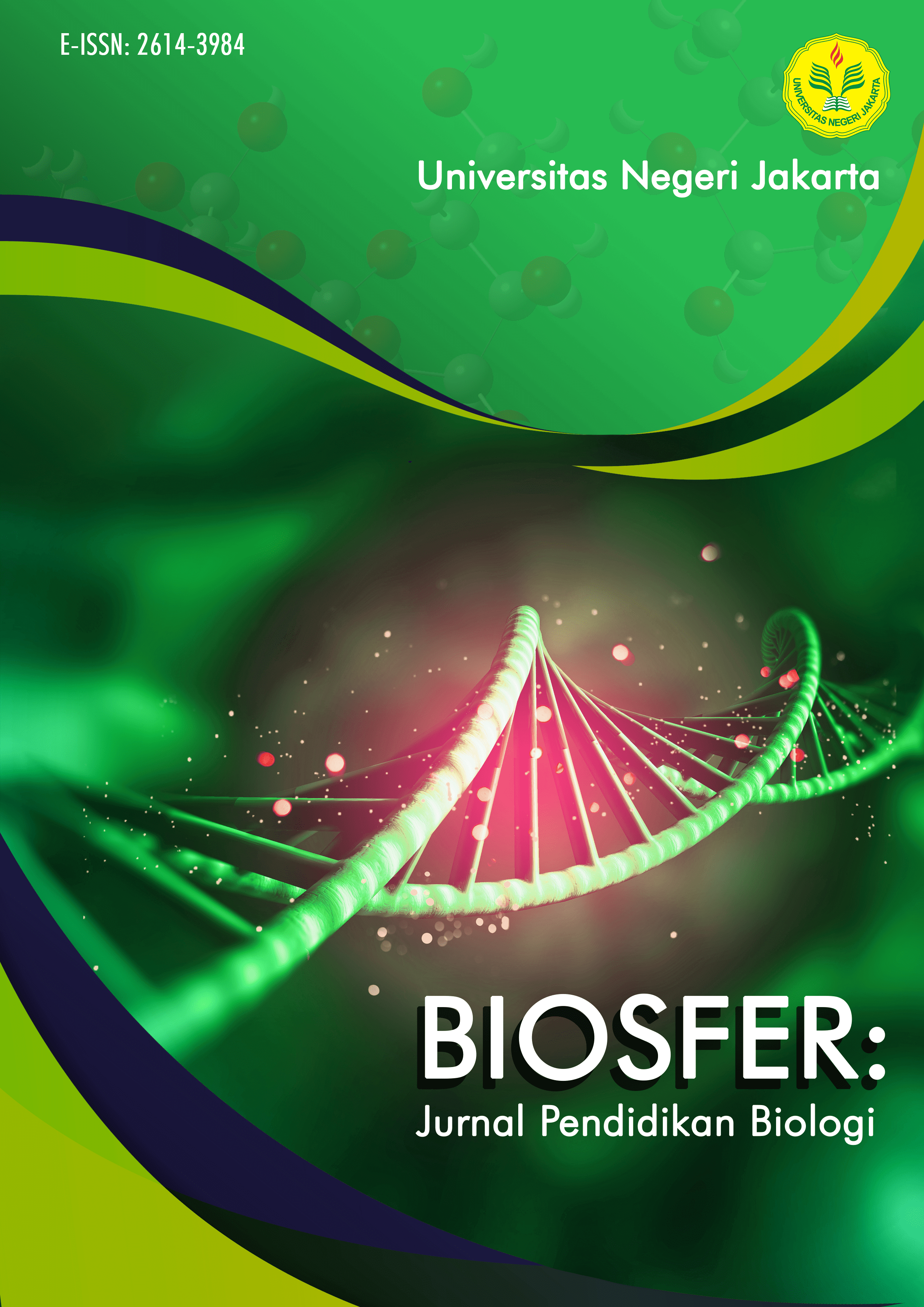The Development of creative thinking and problem-solving skill instrument of plant growth in high school
DOI:
https://doi.org/10.21009/biosferjpb.26535Keywords:
Assesment, Creative, Plant Development, Plant Grow, Problem SolvingAbstract
Creative thinking and problem-solving skills are needed to face the 21st century of 4.0 industrial revolution. Improving the quality of human resources to face the era of the industrial revolution 4.0 must be developed in education. Biology as one of the subjects in high school, especially in plant growth and development matters, allows to develop creative thinking and problem-solving skills because in it there is a student project on plant growth and development. It takes the right instrument to measure the achievement of creative thinking skills and problem solving skills in Biology learning, especially on the topic of plant growth and development. Two instrument questions have been developed, namely the instrument for creative thinking skills and problem solving skills. The development of this instrument was carried out through the stages of Research and Development Borg and Gall 1983. It produced 10 essay questions measuring creative thinking skills and 8 questions measuring problem solving skills. The question gets very decent expert validation criteria with a score of 91% - 97%. The results of the validation test based on the Pearson Product Moment formula show that the ten items of creative thinking skills are valid with a significance level of 0.05. The reliability test of the two instruments has a result of 0.82, above Cronbach's Alpha coefficient, which is reliable for creative thinking skills instruments. Meanwhile, the instrument of problem solving skills showed very reliable results with Cronbach's Alpha value of 0.95.
References
Abdullah, I. (2001). Seks, Gender, dan Reproduksi Kekuasaan. Yogyakarta: Terawang Press.
Anggerenie, N., Cuesdeyeni, P., & Misnawati, M. (2020). Seksualitas Tiga Tokoh Perempuan Dalam Novel Sunyi di Dada Sumirah Karya Artie Ahmad dan Implikasinya pada Pembelajaran Sastra di SMA. ENGGANG: Jurnal Pendidikan, Bahasa, Sastra, Seni, dan Budaya, 1(1), 67-81.
Coelho, P. (2007). Eleven Minutes. Jakarta: Gramedia Pustaka Utama.
Dahlan, M. M. (2003). Tuhan, Izinkan Aku Menjadi Pelacur. Yogyakarta: Scripta Manent.
Faruk. (2005). Pengantar Sosiologi Sastra. Yoyakarta: Pustaka Pelajar.
Foucoult, M. (2000). Sejarah Seksualitas, Seks dan Kekuasan (Terjemahan Rahayu S. Hidayat). Jakarta: Gramedia.
Fowler, R (Ed.). (1962). A Dictionary of Modern Critical Terms. Transl. Herbert M. Schueller. Detroit: Wyne State University Press.
From, E. (2002). Cinta, Seksualitas Matriarki Gender. (Terjemahan Pipit Maizier). Yogyakarta: Jalasutra.
Hidayana, I. (2004). Seksualitas Teori dan Realitas. Jakarta: FISIP UI.
Misnawati, M., Poerwadi, P., & Rosia, F. M. (2020). Struktur Dasar Sastra Lisan Deder. Pedagogik: Jurnal Pendidikan, 15(2), 44-55.
Misnawati, M. P., & Anwarsani, S. P. (2000). Teori Stuktural Levi-Strauss dan Interpretatif Simbolik untuk Penelitian Sastra Lisan. GUEPEDIA.
Nurachmana, A., Purwaka, A., Supardi, S., & Yuliani, Y. (2020). Analisis Nilai Edukatif dalam Novel Orang-orang Biasa Karya Andrea Hirata: Tinjauan Sosiologi Sastra. ENGGANG: Jurnal Pendidikan, Bahasa, Sastra, Seni, dan Budaya, 1(1), 57-66.
Nurgiyantoro, B. (2015). Teori Pengkajian Fiksi. Yogyakarta: Gadjah Mada University Press.
Sudjiman, P. (1987). Memahami Cerita Rekaan. Jakarta: Pustaka Jaya.
Sumardjo, Jakob & Saini K.M. (1997). Apresiasi Kesusastraan. Jakarta: PT Graemedia Pustaka Utama.
Tukan, J. S. (2017). Metode Pendidikan Seks, Perkawinan, dan Keluarga. Jakarta: Erlangga.
Downloads
Published
How to Cite
Issue
Section
License
The Authors submitting a manuscript do so on the understanding that if accepted for publication, copyright of the article shall be assigned to Biosfer: Jurnal Pendidikan Biologi (Biosferjpb) and Departement of Biology Education, Universitas Negeri Jakarta as publisher of the journal.



